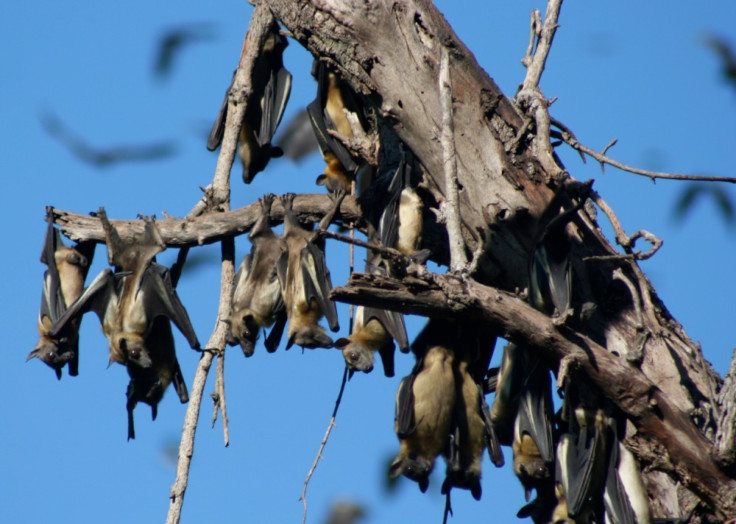African Fruit Bats Carry Deadly Viruses: Study

Fruit bats that range across much of central Africa have been found to transport some nasty little hitchhikers: deadly viruses.
A team of researchers led by scientists from the University of Cambridge tested more than 2,000 African straw-colored fruit bats (Eidolon helvum) in 12 different countries. More than a third of the bats were infected with Lagos bat virus, which can cause a rabies-like illness in mammals. Some 42 percent of the bats were infected with henipaviruses, which can also infect humans and mammals. Outbreaks of Hendra virus – one of the three species of henipavirus -- in Australia have claimed the lives of at least 76 horses and 4 humans. Thus far, Australian health officials have found only three people who have caught the virus and survived, showing that henipavirus infection is rare but has a high mortality rate in humans.
“Our findings have potentially important public health implications and highlight a need to avoid disturbances that may precipitate viral spillover,” the authors wrote in the journal Nature Communications on Tuesday.
Blood and tissue samples also revealed the bats are remarkably genetically similar, even though their roosts were separated by as much as 2,800 miles (about as far apart as Los Angeles and Boston, as the crow flies). This genetic similarity makes it much easier for viruses to spread among the bats, and that makes the potential for fast, widespread transmission of viruses higher than usual.
The fruit bats’ genetic sameness is “remarkable, particularly because of the range over which this species extends,” Cambridge researcher James Wood, one of the authors, said in a phone interview. “To not to have any genetic drift with such a distance... it’s almost unique [among] animals.”
Straw-colored fruit bats love to roost near cities, which raises the potential for human exposure via the bats’ urine or feces. Also, in certain parts of West Africa, fruit bats are an important source of bushmeat, another possible avenue of infection. While henipaviruses and Lagos bat virus have been found in pigs in Ghana, there are no reports yet of humans coming down with either disease in Africa. Still, Wood and colleagues urge caution.
“The large population sizes of E. helvum, its tendency to roost and feed in close proximity to human populations, its extensive distribution across Africa, and its frequent harvesting for bushmeat present numerous opportunities for the exposure of people to excreta, tissues and body fluids from these bats,” the scientists wrote.
However, Wood doesn’t think a massive outbreak or bird flu-type pandemic of henipavirus or Lagos bat virus infections is especially likely.
“The real risk is for people who live on the poorer end of society,” he says.
A lower-income African merchant might not ever eat a mouthful of bat meat, but he might live and work in areas near bat-roosting areas, where he might inadvertently come into contact with the bats’ bodily floods. This constant, low-level exposure to bat-borne viruses might not even blossom into a serious illness, but it might weaken his immune system and make him more vulnerable to other diseases and an early death, Wood says.
"Sometimes, a knee-jerk response can be to try to remove bats from urban areas via culling or dispersal,” lead author Alison Peel said in a statement. “However, there is evidence to suggest that actions such as this can stress the bats and lead to a greater risk of spillover. The most appropriate response is ongoing studies and public awareness to avoid handling bats, and to wash the wound thoroughly if you are bitten by a bat."
SOURCE: Peel et al. “Continent-wide panmixia of an African fruit bat facilitates transmission of potentially zoonotic viruses.” Nature Communications published online 19 November 2013.
© Copyright IBTimes 2024. All rights reserved.





















